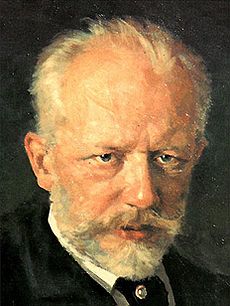Pyotr Ilyich Tchaikovsky’s Symphony No. 6 in B minor, Op. 74, popularly known as the Pathétique, is one of the most profound and emotionally charged symphonies in classical music. Composed in 1893, it was the last symphony Tchaikovsky completed before his untimely death, adding to its mystique and tragic overtones.
Genesis of the Composition
Tchaikovsky began working on the Pathétique in early 1893, following the failure of an earlier attempt at a symphony in E-flat major. Unlike its predecessor, which he later repurposed into his Piano Concerto No. 3, the Pathétique quickly took shape and became a deeply personal expression of the composer’s emotions.
Tchaikovsky confided in his nephew, Vladimir Davydov, that the symphony had a special program—a hidden narrative—but he never revealed its full meaning. Scholars and musicologists have speculated that the symphony reflects Tchaikovsky’s inner turmoil, personal struggles, and premonition of his own death.
Premiere and Reception
The Pathétique premiered on October 28, 1893, in Saint Petersburg, with Tchaikovsky himself conducting. The reception was lukewarm, possibly because the audience was unprepared for the symphony’s unusual structure and overwhelming emotional depth. However, after Tchaikovsky’s sudden death on November 6, 1893, the symphony took on new significance. A subsequent performance, conducted by Eduard Nápravník, received a much warmer reception, cementing the work’s place as one of Tchaikovsky’s greatest achievements.
Musical Structure and Innovations
The Pathétique is notable for its innovative structure and dramatic contrasts. Unlike traditional symphonies, which often conclude with a triumphant finale, the Pathétique ends with a slow, sorrowful movement, defying expectations and leaving listeners in a state of reflection.
- I. Adagio – Allegro non troppo: The first movement begins with a haunting bassoon solo, leading into a powerful and stormy allegro that conveys both passion and despair.
- II. Allegro con grazia: A graceful waltz-like movement in 5/4 time, which gives it an off-kilter, floating quality.
- III. Allegro molto vivace: A vigorous and triumphant march, often mistaken for the finale due to its intensity and grandeur.
- IV. Adagio lamentoso: The true finale, a slow, mournful movement that fades into silence, leaving an emotional void that is rarely seen in symphonic music.
Legacy and Impact
Over time, Symphony No. 6 ‘Pathétique’ has become one of Tchaikovsky’s most celebrated works. Its deeply personal nature and tragic overtones have inspired countless interpretations, with some viewing it as a farewell to life. The symphony has been widely performed and recorded by leading orchestras and conductors, solidifying its status as a masterpiece of the Romantic era.
The Pathétique remains a testament to Tchaikovsky’s genius, offering a glimpse into his emotional world and leaving audiences with an unforgettable experience. Whether seen as a tragic confession or a work of supreme artistry, the symphony continues to move listeners over a century after its creation.


Comments are closed